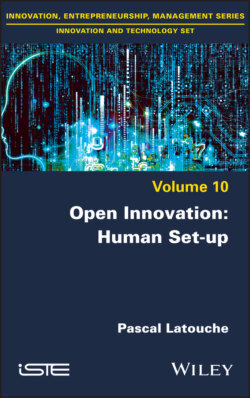Читать книгу Open Innovation - Pascal Latouche - Страница 11
I.3. How do you do it?
ОглавлениеI then asked myself and my colleague the question of how to do it. I met a lot of people, first and foremost external people working in the start-up ecosystem. My assistant did the same, and we debriefed each other quite regularly.
From all these interactions, and debriefings, I retained the following points from the outsiders (the people involved may recognize themselves). Here’s a small sample (because I kept countless notes of my appointments and debriefings from my colleague). This book could have been called “Journal of a numb person” (I’ll explain later).
– “You’re a big company. You are expected to encounter problems and you will make the front pages of the web media if you botch it” – A representative of a well-known web media company.
– “Start-ups want business, not communication” – A successful entrepreneur who has succeeded by sheer determination.
– “Be careful to strengthen them while you accelerate them, you’re big and startups are small” – An expert used to coaching start-ups.
– “You know, your company, like a lot of big companies, doesn’t have a good reputation in its relations with start-ups. Stop pillaging ideas!” – An entrepreneur who had had some unfortunate experiences with my company.
– “You’re a great brand and you have a big role to play with start-ups, how can we help you?” – A representative of institutions that promote start-ups under the aegis of the government.
It wasn’t just external actors we were looking at. Internal actors were also solicited. I’ve encountered internal colleagues at somewhat different points.
– “Start-ups are no more innovative than we are internally” – An R&D Engineer.
– “Step forward and engage that corporate accelerator. Move the boundaries, even though we know you won’t just make friends” – A Chief of Staff.
– “Don’t make promises to start-ups that the company can’t keep” – A top manager in innovation.
– “It’s not clear what the risks are of working so conspicuously with start-ups. Identify risks and control them operationally” – A Communication Manager.
– “Business partnerships with start-ups? Why not! Make us some proposals and we’ll take a look” – A Business Unit Manager.
This is a small sample of the exchanges. For the internal actor, as for the external one, the tone was sometimes positive, sometimes aggressive. But in any case, my feeling was that there was a real desire to face this mystery embodied by the universe of start-ups whose media were buzzing in our ears every day. Everyone was asking to see, some in an observing role, some in a potential inquisitor role, and some in a benevolent one.
What better way to try to succeed than to enlist the services of allies, as well as critics, both internal and external? That’s exactly what was going to be done. From the outside, we could expect pushing the best start-ups and helping us strengthen them in terms of structure and people. Internally, we were able to find the first “courageous” people who were at least committed to taking a good look at start-up cases and helping us to retain those that made sense. It was difficult at this “first” stage of obtaining firm commitments from commercial partnerships at the end. I was counting on the involvement of the corporate accelerator team to make sure we got there as much as possible. Shy, numb, no doubt, but I was not giving up.
Involving the actors, while taking final responsibility for the outcome seemed the right stance to me. If it worked, it would be thanks to all these actors. If it went wrong, it would be because of me. This is reassuring enough for an organization faced with the unknown to be able to blame someone in advance in case of failure. It seemed to me a good way to bring the external “family” (of start-ups) closer to the internal “family” (of the established company). The corporate accelerator and its small team (two people including myself) had to and was going to enter unknown lands that had nothing to do with marketing, sales or even the idea that one had of business techniques.
